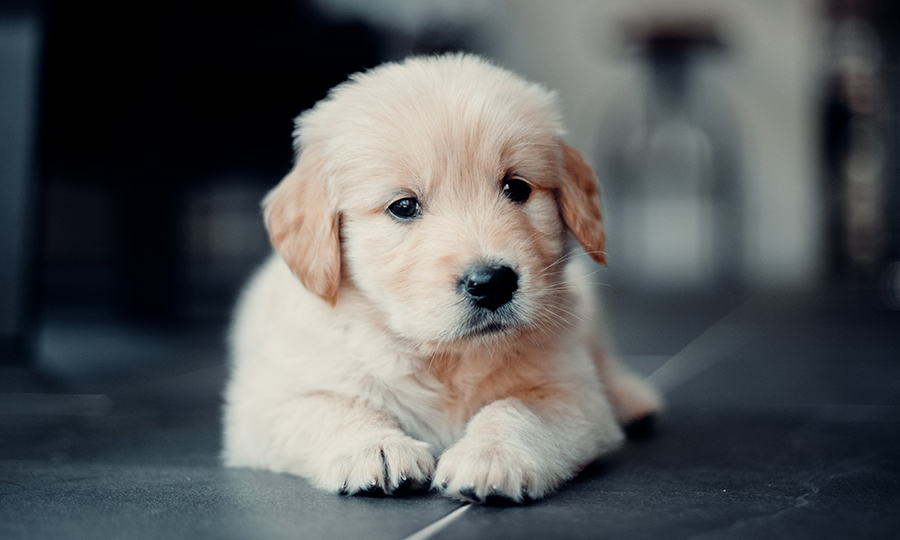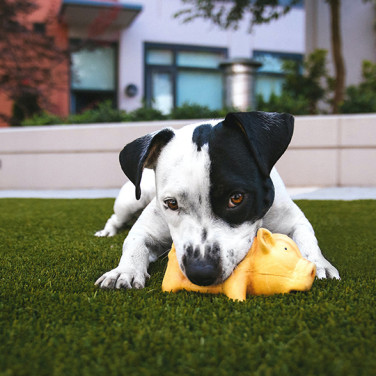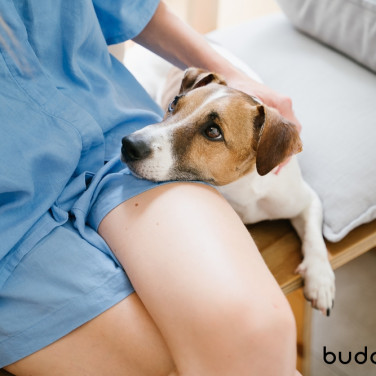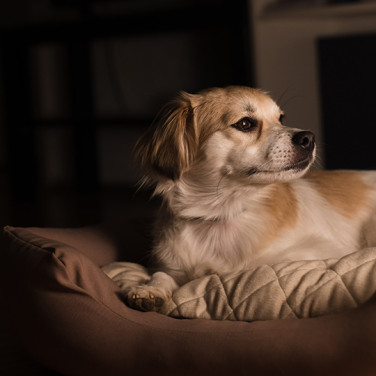ARTICLE
10 Tips for Puppy Proofing Your Home: Guide for New Dog Owners
페이지 정보
본문


How to puppy proof your house
Congratulations on adopting your new puppy! Owning a puppy is a lot of fun, but it’s also a big responsibility. One important aspect of being a responsible dog owner is making sure that your home is prepared and safe for your puppy. Puppy proofing your home will not only protect your puppy from potential dangers, but it will also prevent any accidents or damage to your home. To help you prepare for your new furry friend, here are Buddydoc’s 10 best tips for new dog owners on puppy proofing your home.
-
Secure your trash cans: Puppies are known for rummaging through trash bins, chewing through trash bags, and getting into things they shouldn’t. Invest in trash cans with secure lids to prevent your puppy from getting into dangerous items or making a mess. Alternatively, you can tuck your trash bins away behind a pantry or behind puppy gates.
-
Keep dangerous items out of reach: This includes things like cleaning products, medications, and small objects that your puppy could swallow. Store these items in a high cabinet or on a shelf that your puppy cannot access.

-
Use baby/puppy gates: Baby gates are a great way to block off areas of the house that you don’t want your puppy to access. This can include the kitchen, where they may be sharp objects or cleaning products within reach, or the stairs, which can be dangerous for a young puppy to climb.
-
Cover electrical cords and outlets: Puppies love to chew on things, and electrical cords can be too tempting for them to resist. Cover any exposed cords with cord covers or tape to prevent your puppy from chewing on them. Similarly, use outlet covers to protect your puppy from electrical shocks.
-
Keep plants out of reach: Some plants can be toxic to puppies if ingested. Below is a list of common house plants that are dangerous to dogs if chewed and ingested. Keep these plants out of reach or consider removing them from your home or yard all together.
-
Choose your rugs wisely: If you have any expensive rugs or any floor decor worth protecting. You may want to consider moving them into storage while potty training. They will be puppy enemy #1 for accidents and chewing. Accidents are inevitable and when they do occur, make sure you use enzymatic cleaning spray to remove their scent completely from the accident sites. Their smell can trigger them to have another accident in the same spot.
-
Keep an eye on your puppy: The most important tip for puppy proofing your home is to keep a close eye on your puppy at all times. This will allow you to catch any potential dangers before your puppy gets into them. Getting into your favorite pair of shoes, expensive purse, important papers, etc. can all be saved if they are kept out of reach and watching your growing puppy closely.

-
Use a crate: A crate can be a great tool for puppy proofing your home. When you can't supervise your puppy, you can put them in the crate to keep them safe!
-
Close your toilet lids: You will need to remind yourself to close your toilet lids now that your puppy can potentially fall into the toilet or drink from it. The cleaning products you use can cause problems to your puppy if ingested.

-
Reward good behavior: As your puppy gets older and starts to understand what is and isn't allowed, make sure to reward good behavior. This will help your puppy learn what is expected of them and make it more likely that they will continue to behave well.
FAQ about puppy proofing a house
Below are the most frequently asked questions pertaining to puppy proofing a home from new dog owners.
-
How do I know what to look for when puppy proofing my home?
When puppy proofing your home, you should look for any potential hazards that your puppy could get into. This includes things like cleaning products, medications, small objects that your puppy could swallow, and electrical cords. You should also consider the layout of your home and how you can make it safer for your puppy, such as blocking off certain areas with gates or using baby gates.
-
Is it necessary to puppy proof my entire home?
It's not necessary to puppy proof your entire home, but it is important to consider the areas where your puppy will have access. This will likely include your living room, kitchen, and any other common areas where your puppy will be spending time. You should also consider blocking off any rooms or areas that are off limits to your puppy.

-
How long should I continue puppy proofing my home?
It's a good idea to continue puppy proofing your home until your puppy is fully grown and has learned what is and isn't allowed. This can take anywhere from a few months to a year or more, depending on the breed and size of your puppy. Even after your puppy is fully grown, it's still a good idea to keep an eye out for any potential hazards and to continue positively reinforcing good behavior.
-
How can I stop my puppy from chewing on things?
Bitter spray is a pet-safe product that can be sprayed on household items to discourage puppies from chewing on them. It's generally safe to use, but it's important to follow the instructions on the package and to avoid spraying it on items that your puppy could ingest. Some puppies may not be deterred by bitter spray, so it's important to also provide your puppy with plenty of appropriate chew toys and to supervise them when they are chewing. There are homemade recipes for bitter sprays you can make by mixing 2 cups of apple cider vinegar or lemon juice with a cup of white vinegar.
-
What should I do if my puppy gets into something they shouldn't?
If you suspect that your puppy has gotten into something they shouldn't, the first thing you should do is remove the item from your puppy's reach. If you're not sure what the item is or if you're concerned about your puppy's safety, it's a good idea to call your veterinarian or the ASPCA Animal Poison Control Center (APCC) at (888) 426-4435. They will be able to advise you on what to do and whether your puppy needs medical attention.
What houseplants are toxic to dogs?
Common houseplants that are toxic to puppies and dogs:
- Azalea
- Aloe vera
- Caladium
- Castor bean
- Chrysanthemum
- Corn plant
- Desert rose
- English ivy
- Foxglove
- Holly
- Jade
- Lilies
- Oak
- Sago palm
- Tulip
If you think that your puppy has ingested a toxic plant, it's important to seek medical attention immediately. You can also call the ASPCA Animal Poison Control Center (APCC) at (888) 426-4435 for advice and assistance. Keep in mind that this is not a comprehensive list, and there may be other plants that are toxic to puppies and dogs. It's a good idea to do your research and to keep all plants out of reach of your puppy, especially if you're not sure if they are safe.

Below is a list of common houseplants that are safe for dogs:
- Azalea
- African violet
- Boston fern
- Christmas cactus
- Ficus
- Gerbera daisy
- Spider plants
- Prayer plants
- Baby rubber plants
Keep in mind that it's always a good idea to supervise your dog around any plants, even if they are considered safe. Some dogs may still be tempted to chew and ingest its leaves, which could cause digestive issues or other problems. If you're not sure if a particular plant is safe for your dog, it's a good idea to do some research or to consult with your veterinarian.
Review with this puppy proofing checklist!
-
Secure trash cans:
Make sure that your trash cans have secure lids to prevent your puppy from getting into them.
-
Keep dangerous items out of reach:
This includes things like cleaning products, medications, and small objects that your puppy could swallow.
-
Use baby/puppy gates:
Baby gates are a great way to block off areas of the house that you don't want your puppy to access.
-
Cover electrical cords and outlets:
Protect your puppy from electrical shocks by covering any exposed cords with cord covers or tape.
-
Keep plants out of reach:
Some plants can be toxic to puppies if ingested. Keep any plants that could be dangerous out of reach or consider removing them from your home altogether.
-
Choose your rugs wisely:
If you have any expensive rugs or any floor decor worth protecting. You may want to consider moving them into storage while potty training.
-
Keep an eye on your puppy:
Supervise your puppy at all times to catch any potential dangers before they happen.
-
Use a crate:
A crate can be a great tool for keeping your puppy safe when you can't supervise them.
-
Close your toilet lids:
You will need to remind yourself to close your toilet lids now that your puppy can potentially fall into the toilet or drink from it.
-
Reward good behavior:
As your puppy gets older, reward good behavior to help your puppy learn what is expected of them.
Conclusion on how to puppy proofing your home for new dog owners
By following these tips, you can create a safe and welcoming environment for your new puppy. While it's not possible to completely eliminate all potential dangers, taking the time to puppy proof your home will go a long way in giving your puppy the best start to the rest of their life with you! Remember to always keep an eye on your puppy and to reward their good behavior. With a little bit of effort and attention, you can create a home that is both safe and enjoyable for your new furry friend.
Read more on the Buddydoc blog page!

Buddydoc provides a weekly updated blog to keep you informed on the latest and best ways to prepare and take care of your pet all year round. Check out more articles you may be interested in!












